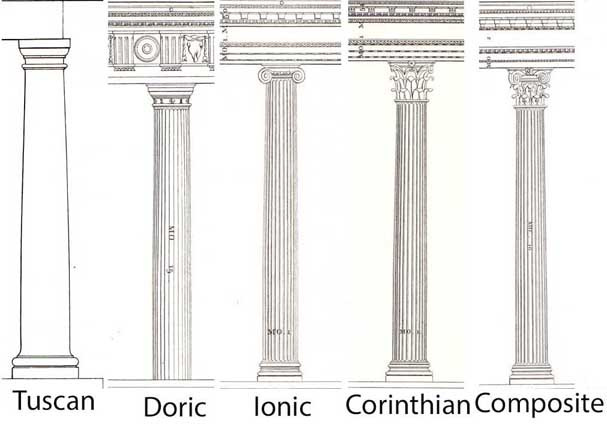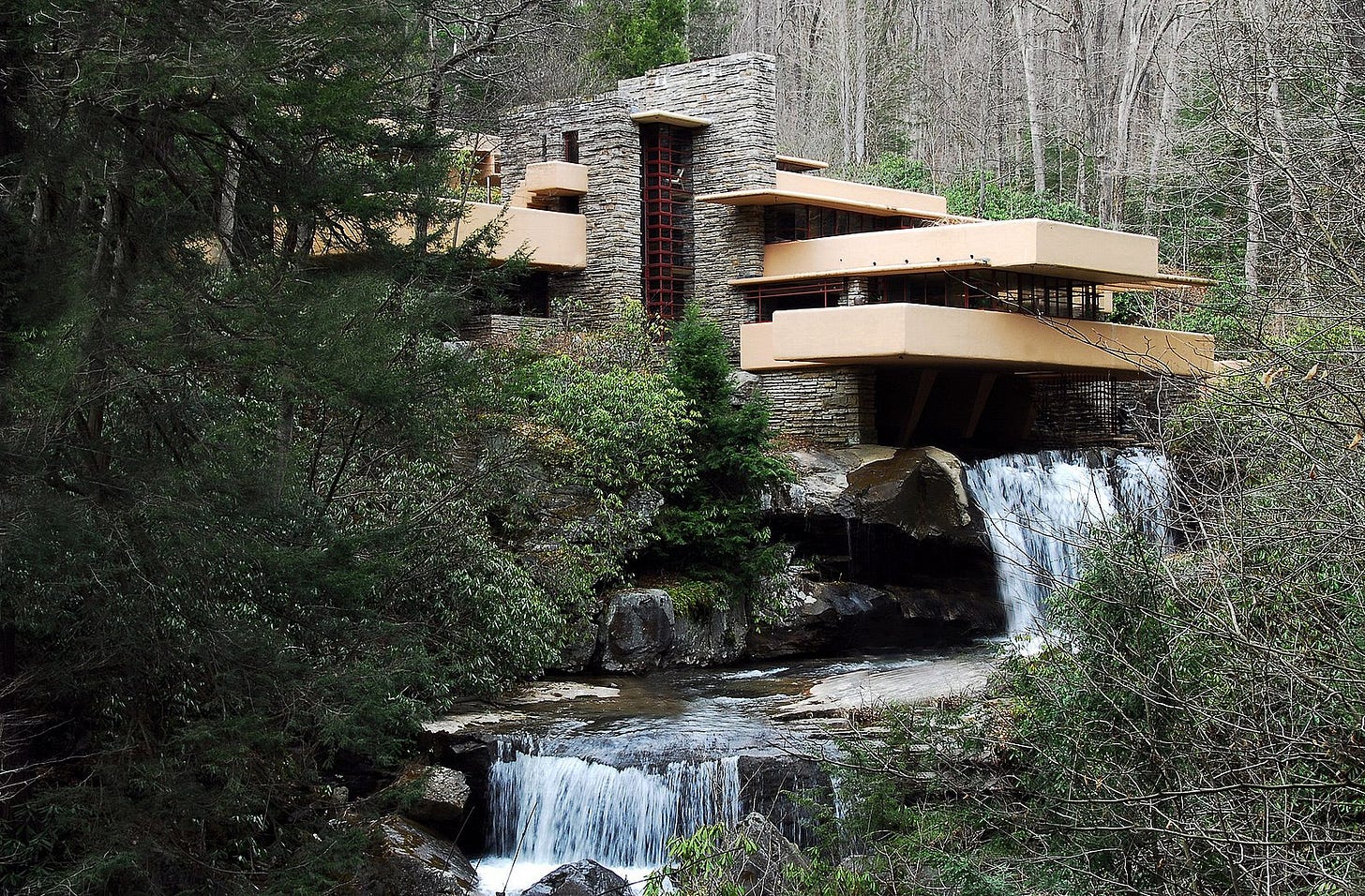Vitruvius, pt. 1: Location, Location, Location
Vitruvius' "Ten Books on Architecture" sets the stage for classical architecture. He defines the classical orders and sets out the principals that will govern architecture for centuries.
Vitruvius was a Roman military engineer and architect. He purports that no other works on architecture were sufficient to learn the art, so he wrote his Ten Books on Architecture to provide a comprehensive guide. The book is impressive in that it is both concise and comprehensive. He starts at the most basic building blocks, explaining the properties of various species of trees, the manner of fabricating brick, and the types of sand mixed with lime for mortar. He proceeds then to the construction of walls, then to general properties, then to the particular properties of different types of buildings.
Vitruvius knows that to move forward, there must be something to push off of.
He asserts that there are five principals of architecture: Order, Symmetry, Propriety, Arrangement, and Good Rhythm. Order is the proper measurement of parts; symmetry is agreement of parts to the whole; propriety is putting things in the right place; arrangement is how things are drafted and laid out on site; and good rhythm is the internal proportion of a part and the proportion of parts to other parts.
He discusses four of the five classical orders of architecture: Ionic (feminine), Doric (masculine), Tuscan (simple), and Corinthian (sumptuous). He does not discuss the Composite Order. It is difficult to see in the image below, but the Composite Order combines the acanthus leaves of the Corinthian Order with the Cushion of the Ionic capital.
A skilled architect must also know something of the other fields of knowledge, though especially music, history, medicine, law, geometry, and œconomics. Music for the knowledge of proportion & harmony, history for understanding the origins of tropes, medicine to know what makes a site healthy or unhealthy, law so that one may follow construction laws and write good contracts. Œconomics is used in the ancient sense of “household management,” being a combination of managerial skills, accounting, and cost-effective problem solving.
While all of the previous principals are universal, Vitruvius places a great importance on context. Culture, materials, location, climate, costs, and religion are but a few of the factors that must be considered. He correctly observes that not all materials are available in the same quantity for the same price in all places. Therefore, to stay within budget, a good architect will adapt to local materials. Additionally, the use of the building and its owner cannot be ignored. A bath should not be designed in the same manner as a temple, just as an opulent house should not be built for one who cannot afford it or one who has no need of it. Similarly, temples are constructed differently due to their purposes. A temple for a vigorous god, like Mars, will be in the strong, Doric order, while a temple for a gentle god, like Ceres, should be in the dainty Ionic order. This is a much more sensible principle of “form follows function” than anything the modernist justifies with that cliché…
Climate, prior to air conditioning, was a dominate consideration during design and construction. Almost every building that Vitruvius describes begins with which direction it should face to make use of the angle of the sun at different times of the day or year. Further, different styles are preferable in different areas based on their cooling or heating effects. In the same vein, he is very open to the use and integration of local styles into designs, since the previous generations of architects have already carefully thought through the myriad factors.
But context does not simply govern the individual building, entire cities are subject to context. Their location must be very carefully selected to reduce risks of disease or to provide access to the sea or navigable rivers.
Context is neither an abstract, nor a completely concrete notion to Vitruvius. The two are intimately mixed. The personality of a god determines the proper style just as much as the fire risks of their ceremonies determines the proper location.
In real estate terms, this is the famous Location, Location, Location, but there is more to it than that. Architecture is inseparable from its surroundings because it must be attached to land. It therefore takes on many of the properties of land. No two places are the same in relation to their surroundings. Further, certain locations are superior to others.
This is what drives me crazy about modern architecture. The same building can be slapped down anywhere, and I could not tell if it is in Ohio or Bangladesh. It truly is an ‘international’ style in that there it is reduced to the most common denominator: a steel & glass box. It is pure imperialism. The buildings exists only to maximize the value extracted from local people.
Even the modern architecture which seeks to “integrate” with its surroundings makes a mockery of them. Frank Lloyd Wright’s “Falling Water” is “integrated” with the waterfall in the same way that oil is “integrated” with water.
Vitruvius is certainly not stilted and set in his style. Though he sets out ideal types for each building, he argues that all good architects will be searching for newer and superior building principals that have yet to be discovered. In his discussion of the history of the orders of columns, he notes that the original proportions of the Doric and Ionic columns were based on the proportions of men and women. Since then, however, they had been refined to improve their effect. He lauds this modification as an improvement, though he does not denigrate the original proportions either.
Overall, it is a very human architecture. Great emphasis is placed on the comfort and safety of the inhabitants. Techniques for keeping rooms cool and warm by season are dominant. Even the number of steps is regulated so that climbing them feels more natural. The right materials are selected to reduce the risk of the structure collapsing or requiring constant fixing. He appreciates that advances that previous carpenters, stone masons, and architects made, and seeks to understand them so that he may innovate while respecting their inspiration. Vitruvius knows that to move forward, there must be something to push off of.
What is most interesting to me is how adaptable Vitruvius principles are to different circumstances. In our “post-modern” era we try to brute force problems. When glass towers in the desert have issues keeping cool, we install a stronger cooling system and pay more for electricity. Since he did not have the solve-all that is electricity, Vitruvius had to solve such problems through the properties of his materials and their relations to other things. This brings the entire work into a relationship with its surroundings that is simply absent from most modern buildings.



